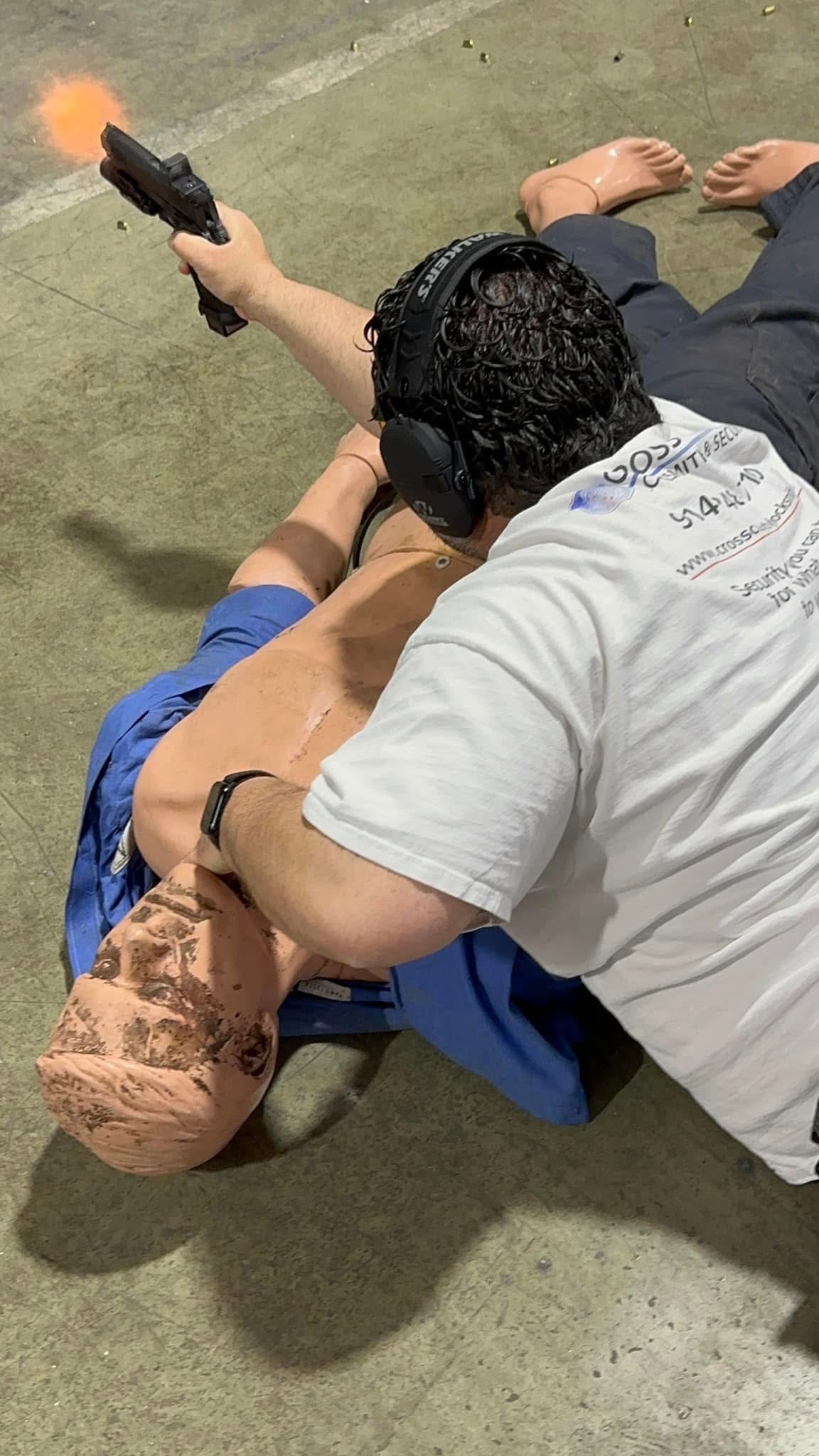KRAV MAGA & SURVIVAL MINDSET TRAINING
Practical Self-Defense • Combat Readiness • Mental Toughness
This intensive course builds the critical skills and mindset needed to prevail in real-world violent encounters. It blends the combative efficiency of Krav Maga with essential hand-to-hand combat, weapons defense techniques, and the appropriate use of force strategies.
🔵 Krav Maga: Real-World Combat System
Originating from the Israeli Defense Forces (IDF), Krav Maga is designed for survival — not sport. Students will learn:
- Rapid threat assessment and instinctive response
- Aggressive counterattacks to neutralize threats quickly
- Defending against punches, grabs, chokes, and multiple attackers
- Situational drills that mirror real-world violence
The training emphasizes simplicity, effectiveness, and the use of natural body mechanics — ensuring techniques can be applied by anyone, regardless of size or strength.
🟡 Survival Mindset Development
Survival is as much mental as it is physical. This module focuses on:
- Building resilience under extreme stress
- Recognizing pre-attack indicators
- Managing fear, adrenaline, and tunnel vision
- Developing decisive action plans during high-risk encounters
Students will leave with a stronger, more confident mental framework to face emergencies and confrontations.
🔴 Hand-to-Hand Combat Skills for All Levels
Designed for beginners and experienced practitioners alike, this segment focuses on practical and adaptable unarmed skills:
- Offensive and defensive striking (punches, elbows, knees, kicks)
- Clinch fighting and takedown defense
- Escaping from holds, grabs, and ground attacks
- Combatives drills for endurance and real-world application
Training intensity is scalable based on student capability and progression.
🟢 Weapons Defense & Disarmament
Understanding how to defend against armed attackers is critical. This portion includes:
- Gun disarmament and control tactics at close range
- Knife defense against slashing and stabbing attacks
- Blunt object (bat, crowbar) defense
- Scenarios involving multiple attackers or surprise weapons
Techniques are drilled under realistic, pressure-tested conditions to enhance instinctive response times.
⚪ Use of Force Tactics
Knowing when and how much force to apply is as critical as knowing how to fight. This legal and ethical component covers:
- Understanding the Continuum of Force model
- Applying proportional response under the law
- Managing post-incident actions (statements, evidence, aftermath)
- Role-playing decision-making in high-stress scenarios
This ensures students are not only physically capable but also legally prepared to justify and defend their actions if necessary.


